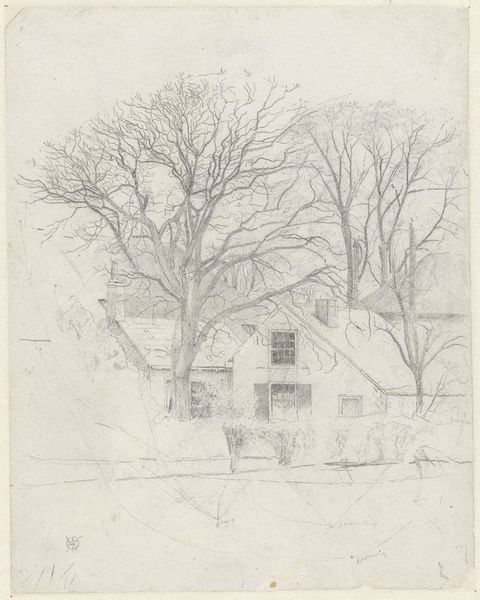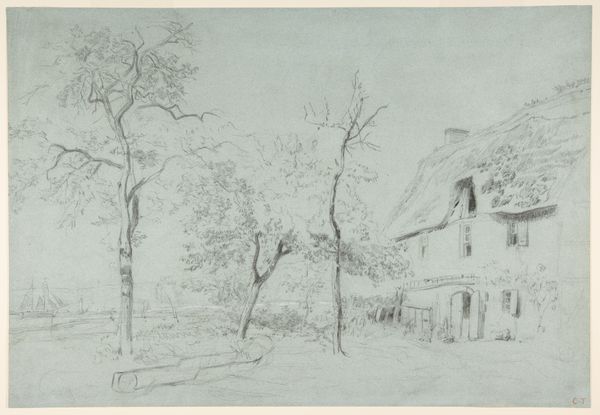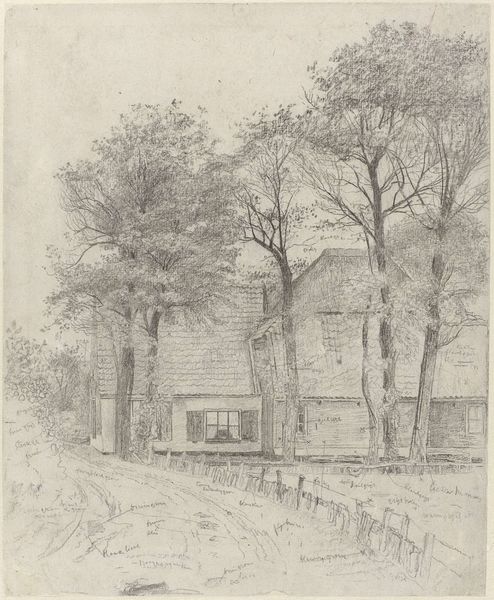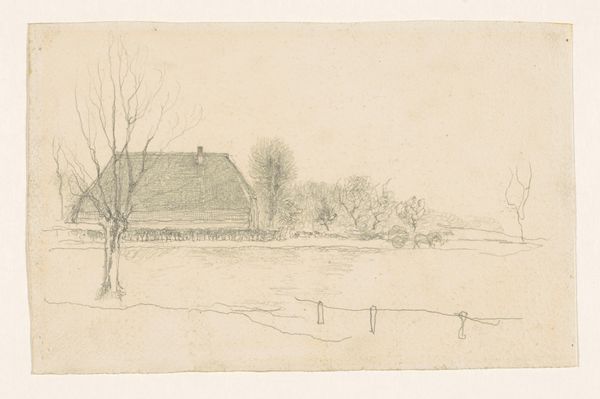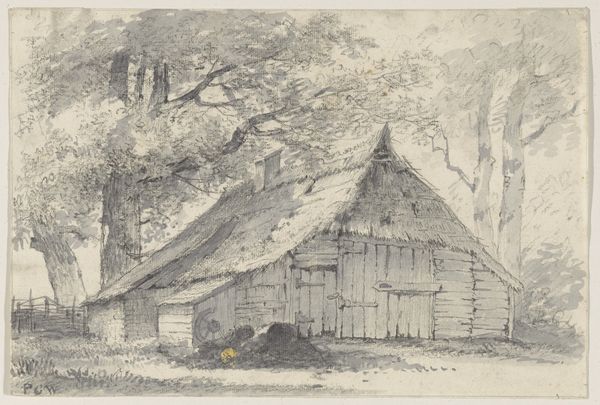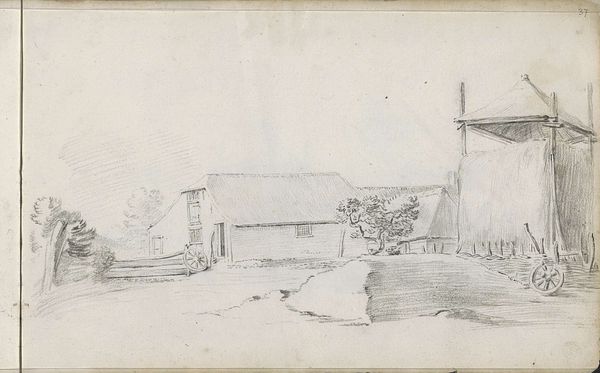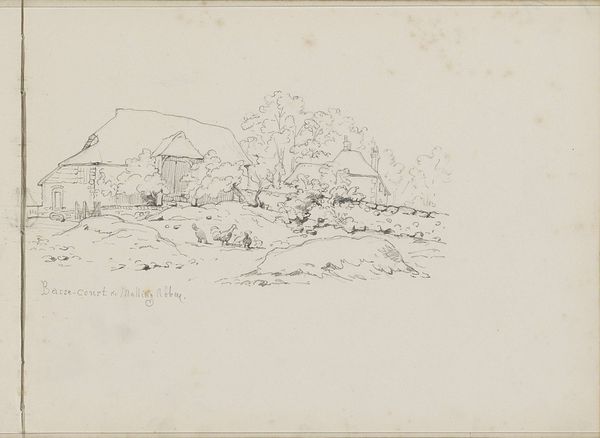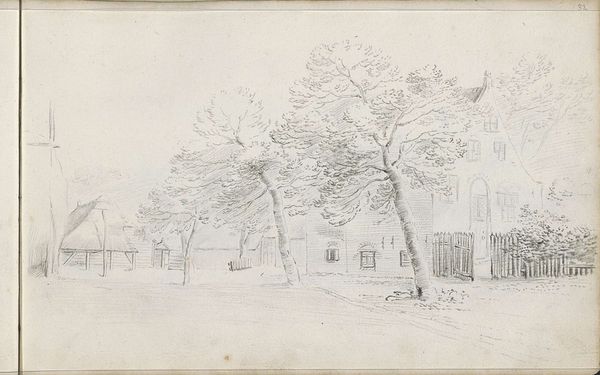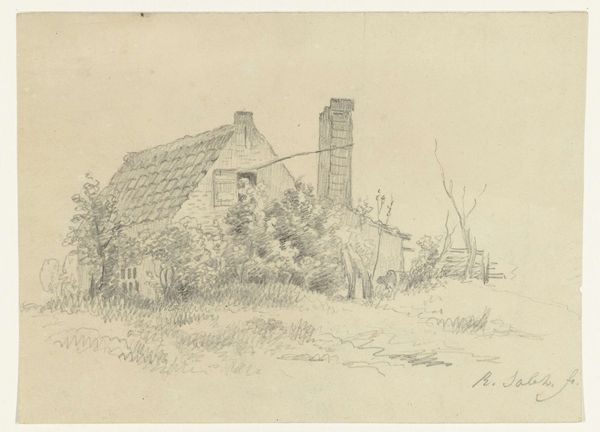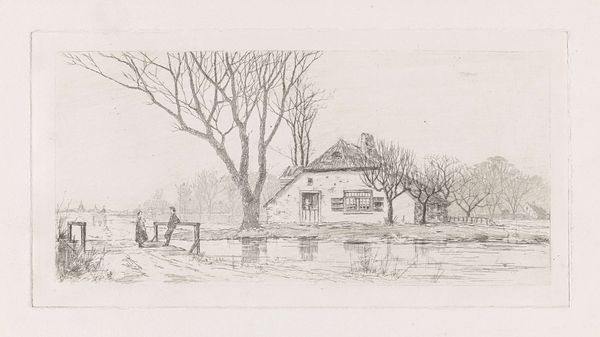
Boerderij bij Velzen: de twee schuren van opzij gezien, omgeven door hoge bomen 1876 - 1924
0:00
0:00
drawing, pencil
#
drawing
#
landscape
#
pencil
#
realism
Dimensions: height 320 mm, width 265 mm
Copyright: Rijks Museum: Open Domain
Editor: This pencil drawing by Gerrit Willem Dijsselhof, titled "Farm near Velzen: the two barns seen from the side, surrounded by tall trees," made sometime between 1876 and 1924… there's a delicacy to it, almost ephemeral. What do you see when you look at this piece? Curator: Immediately, I’m drawn to the emphasis on process. Look at the visible sketch lines, the unblended pencil strokes. Dijsselhof isn't trying to create a seamless illusion. He's revealing the labor, the very act of making. How does that awareness of the handmade change your perception? Editor: It makes me think about the rural economy represented. These aren’t romanticized barns; they're structures built for practical purposes, connected to the local agricultural workforce. Curator: Precisely! And consider the material reality of those barns – wood sourced, cut, and assembled. This connects Dijsselhof's drawing to broader questions of land use, resource management, and the lived experiences of the rural population. Editor: It almost feels like he’s documenting a specific place and time, preserving something that might otherwise be overlooked. Is the emphasis on humble materials maybe elevating the ordinary into something worthy of artistic attention? Curator: That's a crucial point. It challenges the hierarchy between high art and the everyday. He focuses our attention on the tangible aspects of rural life, forcing us to confront the materials and the labor involved in its construction. Does recognizing this change the way you read the landscape itself? Editor: Absolutely. Seeing the emphasis on the materiality shifts the focus from picturesque scenery to the realities of rural life. I had focused on composition, but now the importance of the scene’s very physicality is obvious. Curator: Exactly. Dijsselhof transforms a simple landscape into a potent statement about materials, production, and the human relationship with the land. Editor: I'll never look at a landscape drawing the same way again! This materialist approach really helps understand the intention.
Comments
No comments
Be the first to comment and join the conversation on the ultimate creative platform.
